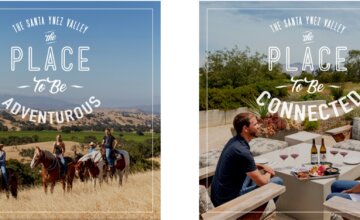DMO Insights – June 1
- Jun 01, 2020
- By Justin Yax
- In DESTINATION, DMO INSIGHTS
I can’t believe it is June. On March 12 when DVA began working remotely, June seemed so far away. Yet here we are. In some aspects the last 12 weeks have gone much quicker than I thought they would, and in some aspects they have passed much slower.
If you’re anything like me, or most Americans for that matter, the COVID-19 situation and its impact on my life in general and on the travel industry specifically has been a roller coaster. A while back, I started looking at my own journey through the lens of the Kubler-Ross Five Stages of Grief (that’s what happens when you are married to a psychology instructor). Though typically associated with relationships or the loss of a loved one, the principles of this cycle can be applied to many other situations, including destinations and DMOs. It looks something like this:
Denial: avoidance, confusion, shock, fear
Anger: frustration, irritation, anxiety
Depression: overwhelmed, helpless, hostile,
Bargaining: struggling to find meaning, reaching out to others, telling one’s story
Acceptance: exploring options, new plan in place, moving on
Fortunately, most of us (and our destinations) have entered the acceptance stage and are ready (and finally allowed) to move on. And while getting to where we are today has been a struggle, and will no doubt continue to have its challenges moving forward, grief is an important process for our mental, emotional, and even physical well-being as we emerge from COVID-19 and look toward brighter days that lie ahead – or in some cases are already here.
In this edition:
- Sophie’s Choice: solving the visitor/resident dichotomy
- Latest Destination Analysts Coronavirus Travel Sentiment Index Report findings
- Rural destinations remain a popular choice
- Useful links & upcoming webinars
SOPHIE’S CHOICE: SOLVING THE VISITOR/RESIDENT DICHOTOMY
States, counties, and cities are reopening. Visitors are once again allowed to travel or will be able to do so soon. Destinations are actively recruiting travelers or encouraging travel planning. While it’s not quite Sophie’s Choice, the decision about when, where, and how to ramp up advertising efforts and go to market in support of leisure travel must weigh two important factors:
- The need to quickly resume leisure travel in an effort to stem losses and spur your local hospitality industry
- An obligation to remain sensitive to fears and concerns (whether real or perceived) of the communities in which we live
We are seeing this story unfold to varying degrees in the destinations we work with (and even in those we don’t work with yet) throughout the West. While some DMOs are taking a more aggressive approach to promoting and encouraging travel, others are allowing that process to evolve more organically. And while no two destinations – and therefore solutions – are alike, the basic premise remains the same: communities need visitors, and vice versa.
In a previous version of this newsletter we talked about the “Interdependence Economy” that exists between a destination’s tourism industry and a community’s residents. This theory is based on the premise that many of the things residents enjoy most in their community – restaurants, retail, attractions, and more – are supported by both resident and visitor dollars. If the visitor dollars go away, which we are witnessing firsthand right now, so will many of the things residents love.
On one hand DMOs are eager to restart their tourism economies as soon as they are allowed to do so. As we head into late spring and summer, there is a “we want them back, and we want them back now” sense of urgency among most destinations – many of which will be actively marketing summer travel for the first time – to recapture as much lost revenue as possible during peak travel season.
On the other hand, many residents are hesitant to welcome visitors back to their community for two primary reasons: 1) concerns over the health and safety of themselves and their community, and 2) the desire to enjoy their town during peak spring/summer travel season and without the presence or “inconvenience” of visitors. The first of these factors is pretty straightforward, and is largely based on DMOs following federal, state, county, and city guidance on how and when to safely allow travel to resume. The second factor is less clear, and some might even say selfish “have your cake and eat it too” attempt. I am just as guilty as the next person in that regard, as I have enjoyed getting outdoors and recreating with fewer crowds than a typical springtime here in Central Oregon. But it doesn’t take long for residents to realize that those empty trails also translate to empty hotels, restaurants, breweries, and shops, layoffs and furloughs, unemployment hassles and hardships, and more. And while the short-term enjoyment may be high, eventually the grim long-term prospects of that situation prevail.
Which may explain why we are now seeing that nearly two-thirds (64.6%) of American travelers feel neutral or better about advertisements encouraging travel to their home community, and almost one-third (30.5%) feel happy or very happy about it:
We talked about the NIMBY Mentality in a previous newsletter as well – the notion that Americans want to travel and are feeling increasingly comfortable with the idea, but don’t want people visiting their community. While we haven’t seen recent data related to travelers’ feelings about people visiting their community, we are seeing sings that people are becoming more and more comfortable with marketing their community, and we expect those two to trends continue to improve and closely mirror each other moving forward.
DESTINATION ANALYSTS CORONAVIRUS TRAVEL SENTIMENT INDEX REPORT FINDINGS – JUNE 1
This week’s Destination Analysts’ Coronavirus Travel Sentiment Index Report tells us that Americans are not only eager to travel, they are increasingly ready to hit the road. Americans continue to exhibit greater feelings of safety, both about travel and about fears of catching the virus in general. Not coincidentally, the number of American travelers who have at least tentative plans to travel at some point in 2020 grew to nearly 70 percent, with many of these trips likely to take place sooner than previously reported. You can downloaded the full findings presentation deck HERE.
Majority of American travelers are ready to…drumroll please…travel: According to the survey respondents, just over half of all Americans have now declared themselves ready to travel or are already traveling, a significant increase from previous survey findings and an indication of the momentum that is building around the return of leisure travel activity. This return to travel is being led by the “early adopters” who are already traveling, followed closely by the “proof of concept” audience that is now ready to travel with few or no hesitations, the “wait and see” audience that still needs more time, and eventually the remainder of travelers.
Still slow, but steady through fall: The months of July through November saw increases in the number of people reporting they have travel plans, hovering in the 18-20 percent range for each of those months. The number of travelers who said they “have no plans to travel in 2020” dropped significantly over the past week, from 32.6% to 25.6%. This group largely consists of the “wait and see” audience, whose hesitations about travel will continue to decline as long as no major setbacks are hit along the way.
Travel as an emotional security blanket: Emotional well-being may be a factor in the number of Americans who are planning to resume travel sooner rather than later. After spending months in isolation, more than two-thirds (66.5%) of American travelers say that leisure travel will be very important or important to their emotional well-being over the next year. Roughly the same number of respondents (67.7%) indicated that leisure travel will be very important or important to finding joy over the next year. We have known the emotional and psychological benefits of travel for some time, and last week’s newsletter even referenced National Geographic’s story about why “Planning your next trip can make you happier.” But after spending months of researching, planning, and dreaming about travel from the confines of our own homes, it would appear that travelers are now ready to turn those plans into actions and reap the emotional benefits that come with exploring once again.
RURAL DESTINATIONS REMAIN A POPULAR CHOICE
Urban and metropolitan areas already had the chips stacked against them with regard to recovery, as travelers generally view them as less safe due to population/crowds, lack of open space, greater number of COVID-19 cases, and more. In fact, only a tenth (10.5%) of American travelers surveyed by Destination Analysts listed “exploring a city or urban area” among the travel experiences they would find most relaxing in the coming year. By contrast, taking a road trip (35%), Staying at a beach resort (34.4%), and visiting a national, state, or regional park (42.6%) were among the activities most frequently mentioned. Not coincidentally, they are all activities typically associated with more rural destinaitons.
Rural and even suburban communities were already poised to see an increase in popularity among travelers as a result of COVID-19, largely due to the health and safety concerns tied to large cities as mentioned above. But the uphill struggles facing metropolitan destinations have unfortunately only been compounded over the last week. Cities large and small across the country have been the site of recent protests related to the tragic death of George Floyd. While these protests were well-intentioned and in many cities existed as the peaceful demonstrations they were meant to be, sadly a number of these protests – particularly in large metropolitan cities – have been and continue to be marred by violence, looting, fires, and even rioting. Without being too opinionated, it’s just one more example (school shootings being another) of how political agendas can and often do take precedence over social justice. And while these injustices are in no way meant to be a comparison to traveler concerns over COVID-19, expect these events to also play a role in shaping traveler choices particularly when it comes to the safety of the destination they choose to visit.
USEFUL LINKS & UPCOMING WEBINARS
Coronavirus Travel Sentiment Survey Findings – Week 12 – Destination Analysts – June 2, 8 a.m. PDT
Prepare for the Bounce Back – Destinations International – June 3, 8:30 a.m. PDT
Reimagining Major Travel Experiences – Miles Partnership – June 4, 12 p.m. PDT
COVID-19 & The Impact On Travel Marketing – Expedia Group – June 4, 10 a.m. PDT
“Why the LGBTQ community may be the first to travel again” – Skift, May 27



